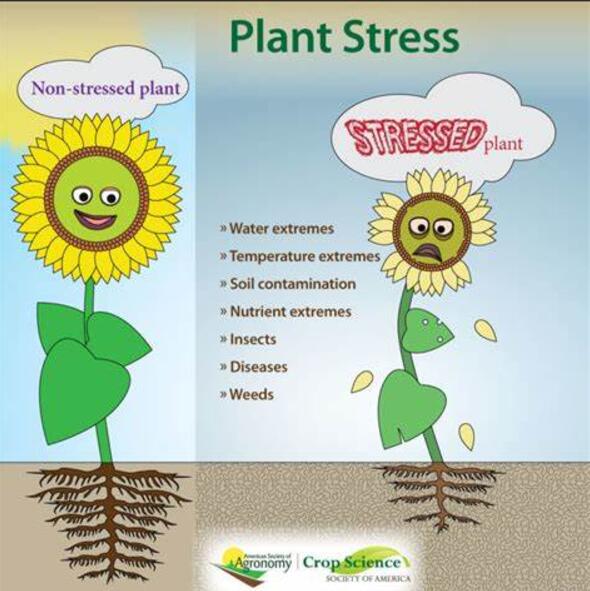Na₂SeO₃ seed priming improves seed germination, seedling growth and rhizosphere microbial community structure of Sugar Beet (Beta vulgaris L.) under salt stress
IF 6.8
Q1 PLANT SCIENCES
引用次数: 0
Abstract
Globally, the problem of soil salinization is becoming increasingly severe, posing a serious threat to agricultural production and food security. Sugar beet, as an important sugar - producing crop, is extremely sensitive to salt stress during the seed germination and seedling growth stages. Existing studies have shown that the priming treatment with Na₂SeO₃ has certain potential in coping with salt stress. This study aimed to explore the effects of the Na₂SeO₃ priming treatment on the germination of sugar beet seeds, the growth of seedlings, and the structure of rhizosphere soil microorganisms under salt stress conditions during germination and pot - planting. The research results indicated that salt stress significantly inhibited the germination of sugar beet seeds and the growth of seedlings, reduced the content of photosynthetic pigments, disrupted the ion balance, and increased the degree of membrane lipid peroxidation. However, the priming treatment with Na₂SeO₃ could effectively alleviate these negative effects. Appropriate concentrations (20 μM and 30 μM) of Na₂SeO₃ could accelerate seed germination, improve the seed vitality level, promote seedling growth, increase the content of photosynthetic pigments, improve the ion balance, increase the contents of soluble sugars and soluble proteins, reduce the content of malondialdehyde (MDA), and enhance the activities of antioxidant enzymes. In addition, the study also found that the Na₂SeO₃ priming treatment had a positive regulatory effect on the structure of the rhizosphere soil microbial community. Within a certain concentration range, Na₂SeO₃ could increase the number of microbial species in the rhizosphere soil and significantly enhance the richness and evenness of the community. Under different treatments, the composition of the rhizosphere microbial community showed obvious differences, and there were significant correlations between some dominant genera and plant physiological indicators. In conclusion, the priming treatment with an appropriate concentration of Na₂SeO₃ could significantly enhance the tolerance of sugar beet seeds and seedlings to salt stress, optimize the structure of the rhizosphere microbial community, providing a scientific basis for salt - tolerance research of sugar beets and the screening and development of seed coating agents.
求助全文
约1分钟内获得全文
求助全文
来源期刊

Plant Stress
PLANT SCIENCES-
CiteScore
5.20
自引率
8.00%
发文量
76
审稿时长
63 days
期刊介绍:
The journal Plant Stress deals with plant (or other photoautotrophs, such as algae, cyanobacteria and lichens) responses to abiotic and biotic stress factors that can result in limited growth and productivity. Such responses can be analyzed and described at a physiological, biochemical and molecular level. Experimental approaches/technologies aiming to improve growth and productivity with a potential for downstream validation under stress conditions will also be considered. Both fundamental and applied research manuscripts are welcome, provided that clear mechanistic hypotheses are made and descriptive approaches are avoided. In addition, high-quality review articles will also be considered, provided they follow a critical approach and stimulate thought for future research avenues.
Plant Stress welcomes high-quality manuscripts related (but not limited) to interactions between plants and:
Lack of water (drought) and excess (flooding),
Salinity stress,
Elevated temperature and/or low temperature (chilling and freezing),
Hypoxia and/or anoxia,
Mineral nutrient excess and/or deficiency,
Heavy metals and/or metalloids,
Plant priming (chemical, biological, physiological, nanomaterial, biostimulant) approaches for improved stress protection,
Viral, phytoplasma, bacterial and fungal plant-pathogen interactions.
The journal welcomes basic and applied research articles, as well as review articles and short communications. All submitted manuscripts will be subject to a thorough peer-reviewing process.
 求助内容:
求助内容: 应助结果提醒方式:
应助结果提醒方式:


